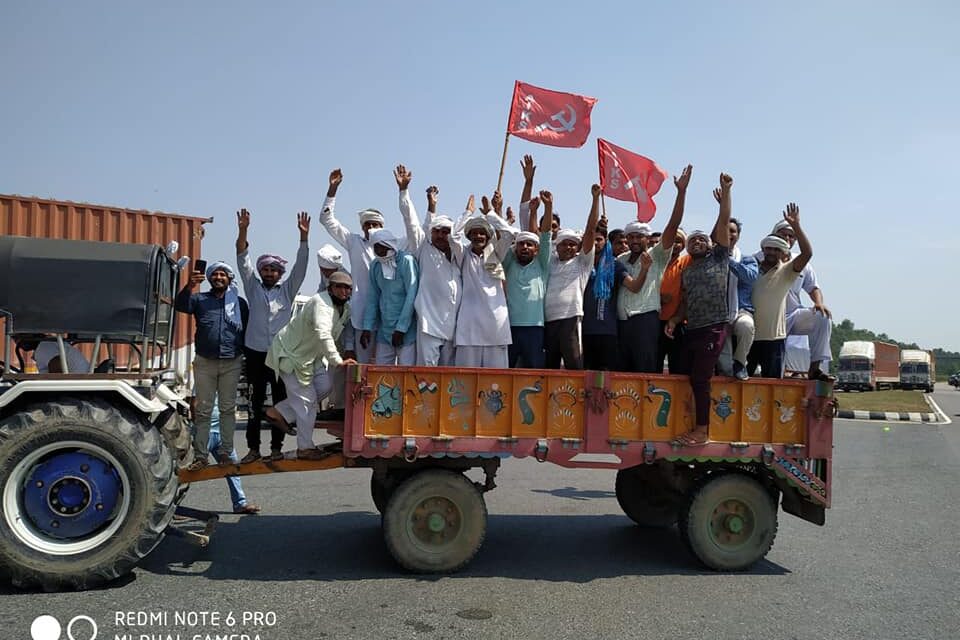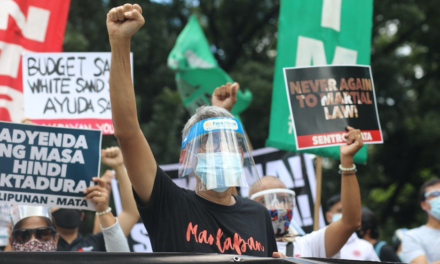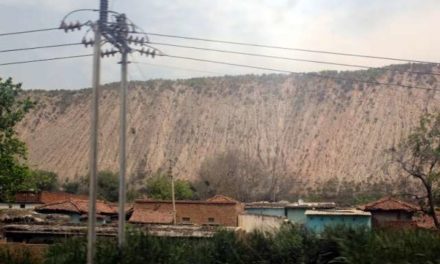- What impacts is COVID-19 (including measures put in place by the authorities) having on food systems, food security and the right to food?
Indian policy makers are erroneously promoting the perception that Indian agriculture is the ‘bright spot’ in the period of COVID-19. This is far from reality. Indian agriculture – constituting of more than 85 percent farms below two hectares (less than five acres) in size – is primarily dominated by smallholder food producers. According to the Agricultural Census of 2015-16, however, these smallholder producers face inequitable distribution of land, owning only 47 percent of the total agricultural land.[1] It is this vast section of small and marginal peasants, including the landless, that bear the brunt of the COVID pandemic, which poses a threat to overall food security in India.
A telephonic survey carried out in villages across the different states during the first part of the suddenly announced COVID lockdowns found that poor peasant and labourer households were surviving on low food consumption and less nutritional diets due to the fall in their incomes and absence of food reserves.[2] It was also found by Right to Food activists that the cash transfers, social pensions and food rations announced by the central government were not reaching the most marginalized sections and poorest parts of the country, leading to a food and nutrition crisis.[3] The pandemic has accentuated the very worrying trend of growing numbers of food insecure people in the country. Recent estimates from the State of Food Security and Nutrition in the World report show that the prevalence of food insecurity in India grew by 3.4 percent between 2014 and 2019.[4]
Additionally, rising food price inflation is going to impact the food intake of peasant households who are net buyers of food. Food inflation rose to a staggering 9.6 percent in July, contributed largely by the prices of meat, fish and pulses.[5]
The fiscal package of INR 1,750,000 million announced by the central government to provide COVID relief has been pointed out to be inadequate, and actually only amounts to less than one percent of India’s current GDP.[6] The measures announced for farmers are mostly related to pushing credit for agricultural infrastructure, for which there are no takers and will do little to raise agricultural incomes of peasants.[7] The actual spending on agriculture by the central government has been one percent of the GDP in the current year.
Impact of COVID on agriculture
The impacts of COVID on Indian agriculture exacerbate the negative effects of neoliberal economic policies followed since the early 1990s, which resulted in falling farm incomes and stagnant wage rates. Starting from 2019, rural India started to face a deep demand crisis.[8]The sudden lockdowns announced by the central government in mid-March 2020 came at the time of the rabi (winter) season harvests, and resulted in disruptions and losses to farmers as well as agricultural workers. On one hand, cultivators were faced with shortage of labour for harvesting their produce and lack of transportation to reach the produce to the markets. On the other hand they faced a fall in demand for their produce with the rise in unemployment levels. States which rely on migrant agricultural labourers for mandi (wholesale market) operations suffered labour shortages, as a result of which there procurement and sale processes slowed down.[9] Data from 20 states of India show that in the first phase of the lockdown there was a 94 percent reduction in market arrival of food grain as compared to the same period last year.[10]Perishable commodities like fruits and vegetables suffered the greatest losses.[11]Poultry farmers and milk producers faced crashing prices.[12]As a result farmers now do not have adequate money and access to credit for the next agricultural season.[13]
In recent years there has been greater dependence of small and marginal peasants on non-farm incomes to compensate for declining crop incomes. In many parts of India, especially in the unirrigated dryland regions, the period in which the lockdown happened is an agricultural lean season, and most households fully depend on non-farm incomes. However, as a result of the lockdown all non-farm incomes stalled, further deepening the economic difficulties of the poorer households.[14] In this period the work available through the Mahatma Gandhi National Rural Employment Scheme (MGNREGS), which legally guarantees 100 days of employment per household, was the only respite to poor rural households. However, the implementation of this scheme during the COVID lockdown period was different across states and the wages under the scheme remain less than the minimum wages in majority of the states.[15]
Instead of providing immediate relief to farmers, the central government is using the pandemic as an opportunity to push large-scale reforms that liberalize agricultural commodity markets and enable greater corporate presence in Indian agriculture.
Government response: heightening corporate control in Indian agriculture
The Indian Parliament was kept adjourned during the period of the COVID lockdown. In this period all the decision making powers rested with the executive, including the powers to sanction ordinances as emergency measures, which remain valid up to six months before legislative approval becomes necessary. The central government announced three ordinances related to agricultural market reforms in June, 2020, without any democratic consultations. These highly contentious ordinances have now been passed as legislations (Acts) in the Indian Parliament during the much delayed Monsoon Session amidst huge opposition and farmers’ protests across the country. Overriding the Constitutional prerogatives of the state governments, the central government has passed these Acts related to agricultural marketing and commerce, which also provide the central government sweeping powers to annul all state specific related legislations. These Acts are:
- The Farming Produce Trade and Commerce (Promotion and Facilitation ) Act 2020
- The Farmers (Empowerment and Protection) Agreement on Price Assurance and Farm Services Act 2020
- The Essential Commodities (Amendment) Act 2020
These legislations have negative implications for farmers’ incomes. By liberalising agricultural markets, the Farming Produce Trade and Commerce Act reduce the ambit of the state-regulated Agricultural Produce Market Committees and provide private players a free run on purchasing farmers’ produce without assuring Minimum Support Prices or remunerative prices.[16] The longstanding demands by farmers’ organisations for remunerative prices have been completely ignored. These Acts, along with other policy instruments being used by the central government to compel states to amend tenancy laws, raise additional concerns about greater corporate control of Indian agriculture through contract farming. Farmer organizations have also raised apprehensions that these Acts will eventually lead to the dismantling of the public procurement system in India.[17]
Similarly, the amendment to the Essential Commodities Act will open the floodgates for hoarding of essential commodities and threaten food security at multiple levels. The Essential Commodities Act was the only government policy to keep the prices of essential commodities such as food grains, pulses, oilseeds, onion and potato under check. The ulterior motive of such an amendment is to attract Foreign Direct Investment and private investment into agricultural supply chains, storage infrastructure and processing industries.
The proposals to amend the Electricity Act and its clause to end cross-subsidies will lead to a multi-fold rise in tariff rates and increase the burden of irrigation costs for small and marginal peasants. This would add to the already rising costs of cultivation pushing the peasantry into further indebtedness.
Along with the central government, various state governments ruled by the Bhartiya Janata Party (BJP) have utilised the pandemic period to pass legislations to liberalize land laws. The Karnataka Land Reforms (Amendment) Act 2020 was passed as an ordinance without any legislative discussions and allows non agriculturalists to buy agricultural land, which was earlier prohibited.
Further, the central government plans to privatise coalfields and auction them to private companies. Many of these coal fields across nine coal producing states of the country are located in forested areas that are ecologically sensitive and will displace tribal communities living there from their home villages and farm lands.
These reforms fail to recognise the existing inequalities in the Indian countryside. Small and marginal peasants are pitted against rich farmers and landed classes. Corporations will be the biggest benefiters of these reforms, which will heighten already existing disparities in the Indian countryside, and whose negative impacts will be disproportionately borne by the small, marginal and landless peasantry in the long run.
During the lockdown, India witnessed thousands of migrant workers walking back to their villages.[18] Agrarian distress has increased rural to urban migration levels in recent years and most workers migrate to cities to substitute for falling farm incomes in the villages. The rising unemployment faced by these migrant workers and their inability to send back remittances during this pandemic has negative impacts on rural household incomes.
These conditions cumulatively pose tremendous challenges to the food security of small-scale, marginal and landless peasants of the country.
- How are communities, solidarity movements, constituencies reacting to these impacts?
Many peasant organizations have come together to demand immediate relief for farmers and peasants. They have also opposed the farm legislations passed by the government. During the COVID lockdown period when no large gatherings were being allowed, peasant groups were organising local protests and using social media to voice their distress.
The All India Kisan Sangharsh Coordination Committee (AIKSCC) – a coalition of more than 250 peasant organizations – has been mobilizing farmers and peasants even during COVID lockdowns. India has witnessed some of the biggest mobilizations of the peasantry in the last few years, especially since the present National Democratic Alliance (NDA) government came to power in 2014, demanding loan waivers and other measures for countering large scale agrarian distress. The AIKSCC has been at the forefront of these protests.
Most recently, the AIKSCC organised an all India protest and strike on 25 September against the farm legislations, which catalysed huge participation of people across the country.
On 9 August, AIKSCC organized protests across the country with the slogan of ‘Corporate Bhagao, Kisan Bachao’ (No to Corporate Loot, Save Farmers). The demands of the AIKSCC were:
- Withdraw the three farm legislations passed by the government and the proposed Electricity Amendment Act.
- Waivers on all agricultural loans taken in the previous rabi (winter) 2019-2020 season and interest-free loans for the upcoming 2020 kharif (summer) season.
- Ensure remunerative prices for all crops including fruits and vegetables.
- Compensate farmers for losses met during the period of the pandemic, including milk and poultry farmers and those affected by the hailstorm and untimely rains in 2020.
- Reduce diesel prices, which have not been revised since 2014 despite international prices falling in this period.
- Increase the employment days under MGNREGS by guaranteeing at least 200 days of employment at minimum wage rates so that agricultural labourers, small-scale farmers and migrant workers who returned to their home places can get work and livelihood support during this crisis period.
- Provide full food rations to every person in addition to cash support to households every month: 15 kgs of cereals/millets, 1 kg of edible oil, 1 kg of pulses and 1 kg of sugar per person. Additionally, cash transfers should be arranged for all households for other basic needs to be met.
- Protect the land and forest resources of tribal communities and other farmers by prohibiting companies from acquiring agricultural land and ensuring that Government does not uproot farmers tilling the land for over one generation. Forcible planting on forest land in the name of Compensatory Afforestation Fund Act (CAMPA Act) should be stopped. This Act was passed in 2016 to afforest equal proportions of land that are ‘diverted for non-forest purposes.’
As part of building larger solidarity, the Janata Parliament (Peoples’ Parliament) was organised from 16 tp 21 August, 2020.[19] This was initiated by a large network of civil society organisations (CSOs), mass organizations and rights-based campaign groups. The entire Peoples’ Parliament covered ten themes, including agriculture. Due to the absence of the real Parliament being convened since March, the Janata Parliament presented the concerns of various sectors/constituencies to opposition parties as well as the public at large. The main demands passed by the agriculture session centred on support for a more sustainable form of agriculture, addressing the deepening agrarian crisis and rejection of the pro-corporate policies adopted by the central government during the COVID pandemic period.[20]
- Emerging public policy proposals and processes for building more equitable and resilient food systems and defending the right to food and nutrition
One of the major public policies being advocated by large number of social movements, peasant organizations and academics for securing the food and nutrition needs of the most marginalized sections of the population has been to universalise the Public Distribution System (PDS).[21] Reports from the ground have shown that due to the mandatory requirement to link AADHAR (unique identity number) identification with accessing food support from the PDS, many needy beneficiaries have been left out.[22]The state of Kerala however, has better utilised the PDS to meet the essential food requirements of its population.[23]The central food stocks with the Food Corporation of India, which is the nodal agency for transporting food grains acquired from farmers to various states, is over 80 million tonnes at present, enough to universalise the PDS coverage to all households in the country. Despite limitations, the PDS has ensured the food security of a large section of the population during the pandemic. However, there is a demand to expand the present basket of items distributed through the PDS, along with universalising its reach. This is considered essential, as a food and nutrition poor population stands to be the most vulnerable in the face of a health crisis.
Another important policy advocated by movements and peasants organizations is to expand the days of work under MGNREGS and speedy payment of wages under the scheme.[24] This would ensure some cash income for poor rural households which can prove essential for them to buy food not covered under the PDS. The demand is to make at least 200 days of employment available to all workers, including those who are not presently registered under the scheme.
Yet another important policy, which has been pointed out by veteran journalist Sainath, “is to get all farmers to grow food crops in the kharif (summer) season. If the present trends persist, a terrible food situation looms. They will not be able to sell cash crops they harvest this season. Going in for more cash crops could prove fatal. A vaccine or cure for the coronavirus seems many months away. Meanwhile food stock will dwindle.”[25]
Instead of paying any heed to these demands, the central government has brought Indian agriculture to a juncture where the structure of agricultural production will be fundamentally altered against the well-being and capacities of small and marginal farmers. However, resistance to these agricultural reforms is building and farmers are demonstrating in various ways and mobilising support from many sections of the population to build collective opposition to these reforms.
Footnotes
[1] Bera, Sayantan (2018), “Small and marginal farmers own just 47.3 percent of crop area, show farm census”, Livemint, October 1, available at: https://www.livemint.com/Politics/k90ox8AsPMdyPDuykv1eWL/Small-and-marginal-farmers-own-just-473-of-crop-area-show.html
[2] Modak, Tapas Singh, Baksi, Sandipan and Johnson, Deepak (2020), “Impact of Covid-19 on Indian Villages”, Review of Agrarian Studies, vol. 10, no. 1, available at: http://ras.org.in/impact_of_covid_19_on_indian_villages
[3] News item, “People eating less to cope with crisis in Odisha’s migration-prone districts”, The Hindu, July 30, 2020, available at: https://www.thehindu.com/news/national/other-states/people-eating-less-to-cope-with-crisis-in-odishas-migration-prone-districts/article32232515.ece
[4] Bansal, Vaishali (2020), “More evidence of India’s food insecurity”, The Hindu, August 24, available at: https://www.thehindu.com/opinion/lead/more-evidence-of-indias-food-insecurity/article32424037.ece
[5] News item, “Retail inflation nearly 7% on food prices rise, RBI may hold rates”, TheTimes of India, August 14, 2020, available at: https://timesofindia.indiatimes.com/business/india-business/retail-inflation-nearly-7-on-food-prices-rise-rbi-may-hold-rates/articleshow/77535416.cms
[6] Jan Swasthya Abhiyan, All India Peoples’ Science Network and Focus on the Global South (2020), “Statement on the Economic Package announced by the Finance Minister with respect to COVID19 pandemic and the lockdown-and our demands”, available at: http://phmindia.org/wpcontent/uploads/2020/04/JSA_Economic_Package_Demands_April-1.pdf
[7] Varma, Subodh (2020), “The Truth Behind Modi’s Agri Infra Investment”, Newsclick, August 13, available at: https://www.newsclick.in/Truth-Behind-Modi%27s-Agriculture-Infra-Investment
[8] Basu, Ranjini(2019), “Economic Slump: Busting Official Myths on Consumer Preferences”, Newsclick, September 14, available at: https://www.newsclick.in/Slump-in-Market-Economic-Slowdown-Nirmala-Sitharaman
[9] Samant, Janaki (2020), “India’s rabi crop withers in the lockdown”, Centre for Monitoring Indian Economy, available at: https://www.cmie.com/kommon/bin/sr.php?kall=warticle&dt=2020-04-24%2013:42:02&msec=043
[10] Rawal, Vikas and Verma, Ankur (2020), “Agricultural Supply Chains during the COVID-19 Lockdown”, Society for Social and Economic Research Monograph 20/1, available at: https://coronapolicyimpact.org/wp-content/uploads/2020/04/sserwp2001-2.pdf
[11] News article, “Farmers lose Rs 20,000 crore as fruits and veggies perish”, Financial Express, May 11, available at: https://www.financialexpress.com/economy/farmers-lose-rs-20000-crore-as-fruits-and-veggies-perish/1954449/
[12] Damodaran, Harish (2020), “Indian Agriculture- If COVID-19 Hadn’t Happened”, India in Transition Special COVID-19 Series, Centre for the Advanced Study of India, University of Pennsylvania, available at: https://casi.sas.upenn.edu/iit/harishdamodaran
[13] Parth, M N (2020), “Coronavirus-related cash crunch, delayed loans present threat to upcoming Kharif season for Maharashtra’s farmers”, Firstpost, June 8, available at: https://www.firstpost.com/india/coronavirus-related-cash-crunch-delayed-loans-present-threat-to-upcoming-kharif-season-for-maharashtras-farmers-8458621.html
[14] Cover story on “Rural Distress”, Frontline Magazine, May 8, 2020, available at: https://frontline.thehindu.com/cover-story/article31404299.ece
[15] Mishra, Kushal (2020), “Only one in five rural households availed work under MGNREGA during the lockdown: Gaon connection survey”, Gaon Connection, September 22, available at: https://en.gaonconnection.com/only-one-in-five-rural-households-availed-work-under-mgnrega-during-the-lockdown-gaon-connection-survey/
[16] Bera, Sayantan (2020a), “Will the new ‘freedom of trade’ Act benefit farmers?”, Livemint, September 20, available at: https://www.livemint.com/news/india/will-the-new-freedom-to-trade-act-benefit-farmers-11600592998681.html
[17] Interview with Vijoo Krishnan, Joint Secretary of the All India Kisan Sabha, one of the major peasant organizations which is leading the movement against the farm bills, available at: https://thewire.in/agriculture/interview-vijoo-krishnan-aiks-msp-farm-bills-farmers
[18] Stranded Workers Action Network (2020), “32 Days and Counting: COVID-19 Lockdown, Migrant Workers, and the Inadequacy of Welfare Measures in India”, available at: https://covid19socialsecurity.files.wordpress.com/2020/05/32-days-and-counting_swan.pdf
[19] Official website of the Janta Parliament: https://jantaparliament.wordpress.com/
[20] News item, “Peoples Parliament: Agrarian Distress Deepened During COVID Pandemic”, Newsclick, August 21, available at: https://www.newsclick.in/Peoples-Parliament-Agrarian-Crisis-Deepened-COVID-Pandemic
[21] Dreze, Jean (2020), “Excess stocks of the Food Corporation of India must be released to the poor”, Indian Express, April 9, available at: https://indianexpress.com/article/opinion/columns/coronavirus-lockdown-food-for-poor-migrants-mass-exodus-jean-dreze-6353790/
[22] Right to Food activists from across different states reported at the Peoples’ Parliament on the ground realities of the actual distribution of rations through the Public Distribution System during the period of the COVID lockdown. The session on Food Security and Nutrition can be viewed at: https://www.youtube.com/watch?v=QNC4uKLI5-E
[23] Swaminathan, Madhura and Johnson, Deepak (2020), “Kerala’s approach to containing corona”, Business Standard, April 22, available at: https://www.business-standard.com/article/opinion/kerala-s-approach-to-containing-corona-120042200026_1.html
[24] Dreze, Jean (2020a), “The need for a million worksites now”, The Hindu, May 25, available at: https://www.thehindu.com/opinion/lead/the-need-for-a-million-worksites-now/article31665949.ece
[25] Sainath, P (2020), “In India, Neither Tokenism Nor Panic Can Help Counter this Unique Crisis”, The Wire, March 26, available at: https://thewire.in/government/india-coronavirus-migrants-agriculture










